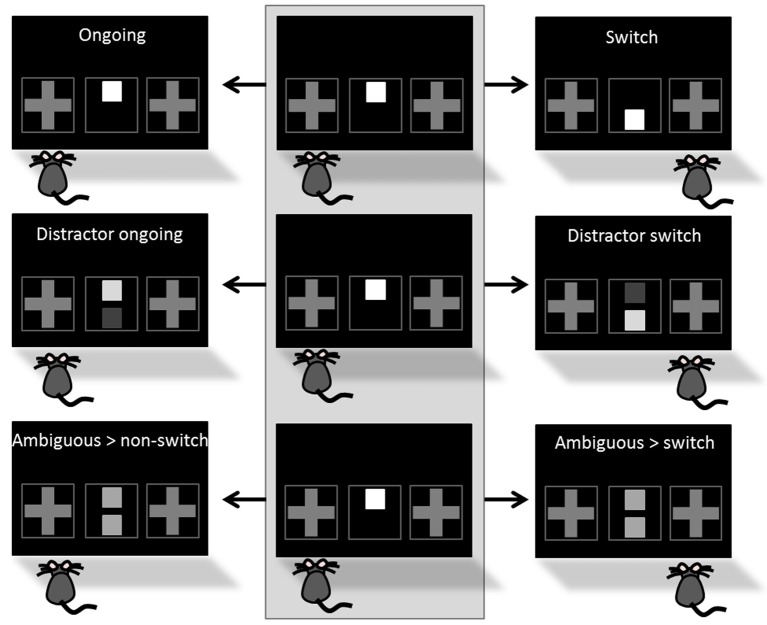Figure 4.
Task conditions. The STABFLEX test combines five different task conditions, including ongoing, switch, distractor ongoing, distractor switch, and ambiguous conditions. Different conditions are defined by the number of cues presented in the cue presentation field (one or two), their position (top or bottom), their relative intensity (different gray values), and the foregoing trial (middle column colored in light gray). Top row: While an ongoing trial is characterized by the presentation of only one cue in the same position in two consecutive trials (left), a switch condition describes a change in the position of the cue between the trials (here: cue at the top > cue at the bottom, right). Middle row: The distractor conditions, i.e., distractor ongoing (left) and distractor switch (right), are based on the same principle, but are complemented by a second cue of different intensity that is task irrelevant and thus a distractor that renders the task more difficult. For answering correctly, the animal needs to solve the task according to the brighter cue. Bottom row: Finally, animals are presented with ambiguous situations that are characterized by the presentation of two cues of the same intensity. The classification of these trials as ambiguous/non-switch (left) vs. ambiguous/switch (right) depends on the behavior of the animal and this condition does not favor one of the two response alternatives. Conditions are presented as a series of two consecutive trials, starting with the foregoing trial in the middle column of the illustration and choices are depicted by the position of the mouse in front of the screen.

